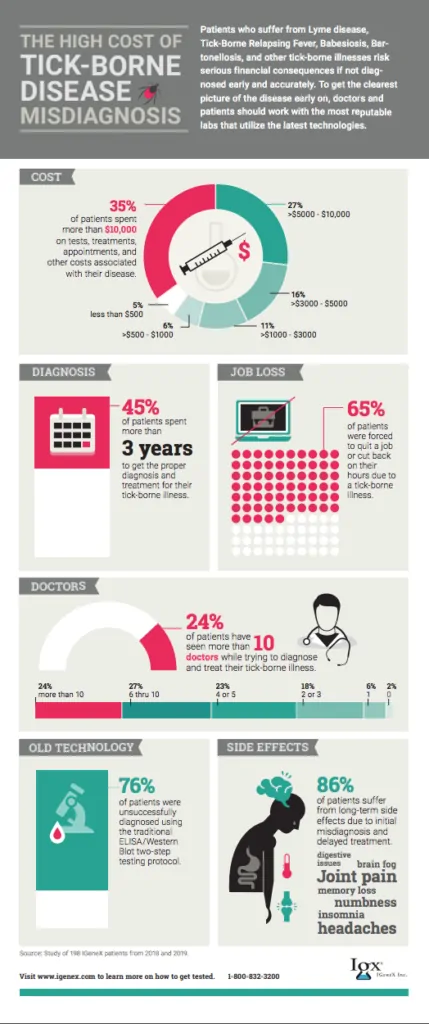Here is our latest press release.
MILPITAS, CA, July 2, 2019 — Nearly 36 percent of patients with a tick-borne disease spent more than $10,000 on tests, treatments, appointments, and other costs associated with their disease, a new IGeneX survey found.
The survey analyzed the cases of 198 patients from 2018 and 2019 who were tested by IGeneX, a leading testing lab in California. Researchers sought to determine how long it took for patients to obtain a proper diagnosis, how many doctors they had visited, and how much financial impact they had ultimately incurred.
According to the survey:
• 45% of patients needed more than three years to obtain the proper diagnosis
• 65% of patients were forced to quit a job or cut back on their hours due to their symptoms
• 24% of patients saw more than ten doctors before receiving a proper diagnosis
• 86% of patients suffer from long-term side effects from not having been diagnosed sooner
Most experts agree that the best patient outcomes are achieved when Lyme disease and other tick-borne diseases are diagnosed and treated as early as possible. “When a tick-borne illness is misdiagnosed, the disease-causing infection has more time to spread, which can lead to more severe or chronic health issues,” says Dr. Jyotsna Shah, President of IGeneX. “That can lead to months and even years of escalating costs for patients and their families due to ongoing doctor visits, diagnostic tests, ineffective medications, and other medical expenses.”
Tick-borne diseases are on the rise and prevention should be on everyone’s mind, particularly during the spring, summer, and early fall when ticks are most active. Prevention and early detection are part of the safety protocol extended by the Centers for Disease Control and Prevention.
Researchers hope that the survey will help educate the public on the risks associated with delaying testing or relying on old testing techniques. “In our view, many patients are missed because much of the testing recommended by general practitioners is based on technology from 25 years ago,” says Dr. Shah. “Science has progressed, and we can now give patients a much more accurate diagnosis than was available years ago.”
For an infographic of key findings from the survey, please go here. For a complete view of the survey results, please go here. For more information on tick-borne diseases and how to get tested, please visit www.igenex.com or www.cdc.gov.





